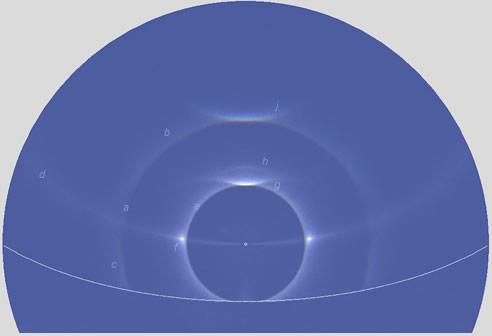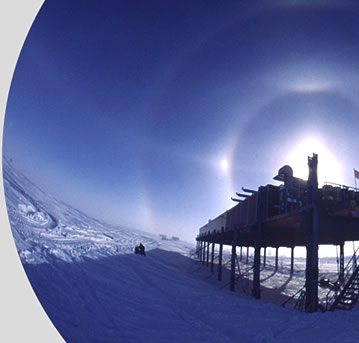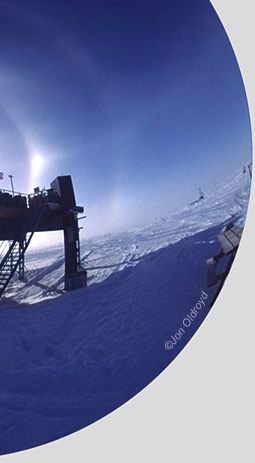
OPOD
What's New
Rays & Shadows
Water Droplets
Rainbows
Ice Halos
Contents
Crystals
Frequent Halos
Infrequent Halos
Why infrequent?
46° Halo
Formation
or supralateral?
Supra/infralateral
Parry Arcs
Lowitz Arcs
Moilanen Arc
Kern Arc
120° Parhelia
44° Parhelia
Subhorizon Arcs
Pyramidal
Multiple Displays
Other Worlds
Observing Halos
HaloSim
High Atmosphere
Links & Resources
Search - Index
123456789012345678
| 46� Radius Halo |
|
||||||||||||
 |
|
| Ray
trace simulation by HaloSim. Halos are: (a)
46°, (b) faint supralateral arc,
(c) faint infralateral arc,
(d) parhelic circle (e) 22°,
(f) parhelia, (g) tangent
arc (h) Suncave Parry and
(j) circumzenithal arc. Crystals
were: random 54%, columns 20%, Parry 4%
and plates 22%. Oriented
crystals were given fairly large wobbles. |



